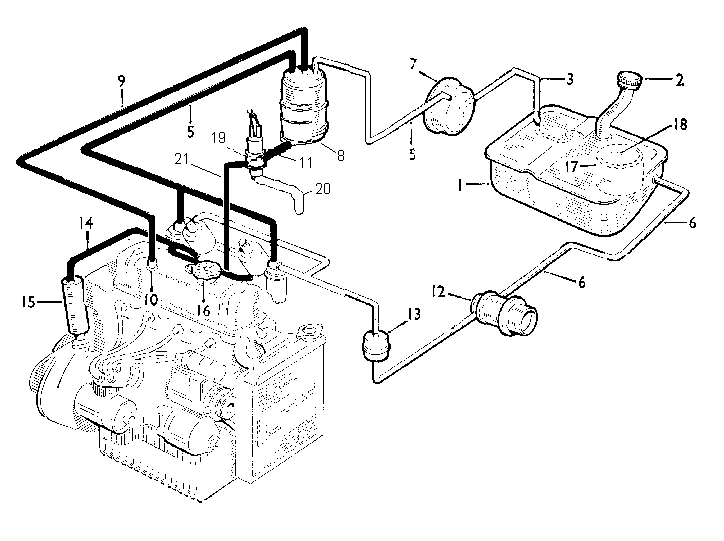Hover over a number for the key, click on the menu items below to show the vapour/vacuum routings.
Fuel Flow Tank Expansion/Contraction Carb Expansion Crankcase Breathing Anti-runon

Image based on one from the British Leyland Workshop Manual
The instant the ignition is switched off the engine is still spinning. The anti-runon valve (19) operates closing off the air vent pipe (20). Carb vacuum is applied via the crankcase breather pipe (14) and oil separator (15) to the crankcase and hence the rocker cover, which has a non-vented oil filler cap (16). The rocker cover restrictor (10) applies carb vacuum to the purge line (9) and charcoal adsorption canister (8). Inlet manifold vacuum from the running-on control pipe (21) is also applied to the canister. The canister applies this vacuum to the vapour pipe (5) to the carb float chambers which sucks the fuel out of the jets thus preventing Dieseling as the engine runs down.
Check the anti-runon plumbing as follows: Start the engine and allow it to idle. Block the open end of the air vent pipe (20) and the engine should stop. Failure to stop indicates blockages or leaks in the running-on control pipe (21), running-on control hose (11), charcoal canister (8), or vapour pipe (5).
In 1978 a second charcoal canister was added below the anti-runon valve (19), to the air vent pipe (20). As the valve was connected to the inlet manifold fumes there could escape to atmosphere via the valve. The second canister trapped these, and was purged in series with the main canister during normal running.